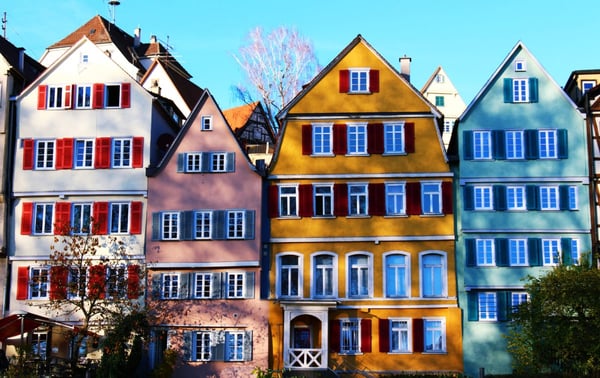Green building is not only a growing trend, it can also have numerous benefits for the builder or investor. However, there are some key differences in green construction in single family homes versus multi-unit dwellings. Knowing those differences before investing in your project will set you on the right path and help you in the long run.
While the incremental cost of incorporating green components is about the same in single family and multi unit dwellings, the similarities end there. The fact is, some green components are more important or more desirable in multi-unit dwellings, and others are more sought after in single family dwellings.
For example, water conservation. It’s no surprise that in the case of multi-unit construction, water conversation, when implemented, is a top priority. According to McGraw Hill, “even though only half of multifamily builders use them (water conserving products) on projects, over 90% of those that do use them consider them important.” The same study found that efficient plumbing techniques were about 20% more critical in multi-unit homes than single family ones. This makes perfect sense as dozens of families may be showering or washing dishes in a multi-unit building at once, making the need for plumbing efficiency paramount in such a model.
Conversely, solar power tends to be a more popular feature in single family green construction because it has direct energy saving benefits to the single unit homeowner, and isn’t being spread around. Solar technology also has the potential to generate a net-zero situation, whereby the amount of energy being used in a home is equal to the energy being produced.
In some areas of the country, solar technology is becoming more and more ubiquitous. According to EcoHome, “California set a target that 33% of energy production had to be renewable by the year 2020, and a 2019 report from the California Energy Commission says they are on track to meet that.”
But perhaps the biggest difference in green technology between single family and multi-unit residences is how the LEED certification system can benefit larger scale projects, like multi-unit. The LEED system, which stands for Leadership in Energy and Environmental Design, gives a series of points to buildings that meet various aspects of green design, and the categories are numerous. Therefore, more points categories are applicable in large-scale multi-unit projects than single family ones, as more categories may be covered.
The categories themselves are quite specific, and multi-unit projects can earn points in categories that realistically wouldn’t exist for single family homes at all, such as ‘Bicycle Facilities’ and ‘Reduced Parking Footprints’. Other points categories benefiting multi-unit projects include: ‘Rainwater Management’, ‘Indoor Water Use Reduction’, ‘Outdoor Water Use Reduction’, and ‘Storage and Collection of Recyclables’ just to name a few.
Importantly, the reason these points-based implementations are beneficial to investors and builders is because they come with potentially large tax breaks as well as reduced construction costs, and expedited permits. When constructing multi-unit residences, these incentives become exponential, benefiting not only the environment, but your investment too!

Recent Posts
- Spec Home Loans: Complete Guide to Construction Financing for Builders
- Spec Construction Loans: A Spec Line of Credit Is Worth the Paperwork
- Spec Homes and Pre-Sale Homes: Relative Benefits for a Spec Builder
- Spec Construction Success: Insights for the Investor Builder
- How Is a Spec House Different From Other Kinds of House Construction?
